Kinematic signatures of the jet, winds, multi-cavities, episodic shells arising in the unified model of bipolar outflows, where an outflow forms by radially-directed, wide-angle toroidally magnetized winds interacting with magnetized isothermal toroids, are extracted. The axial cylindrically-stratified density jet, as predicted in the cold X-wind model, carries a signature of broad profile near the base across the projected velocity of the wide-angle wind and narrows down along the axis with the collimated flow. The smooth self-similar hydrodynamic momentum-conserving shell forms a separate feature near the low velocity, and trace distinct curves of varying elliptic shapes in the position–velocity (PV) diagrams. The reverse shock enclosing the magnetized free wind, surrounded by the compressed wind, clearly forms an innermost cavity and alters the flow pattern and forms an oblique magnetized bubble under the outflow lobe. Shear, the Kelvin–Helmholtz instabilities, pseudo-pulses generated in the compressed magnetized wind and the compressed ambient add fine and distinctive structures to the PV diagrams between the jet–shell velocity components. The compressed ambient poloidal field can further complicate the low-velocity features with spur-like patterns. Apparent jet acceleration by magnetic forces stands out in PV toward the tip at the end of the thick compressed wind region. The self-similar hydromagnetic oblique bubble structures containing extended mixing layers are revealed by their kinematic signatures. Jet-like knotty structures and wide-angle cavities in the Class 0/I sources are finding their natural origins within this unified framework.
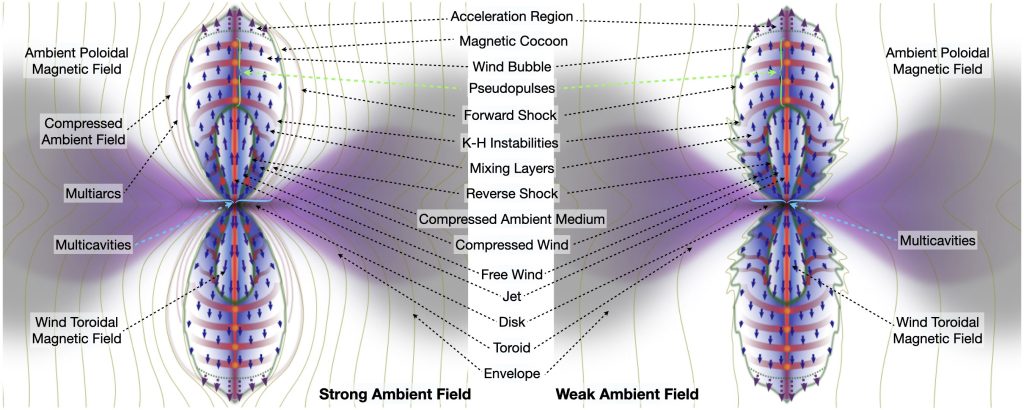
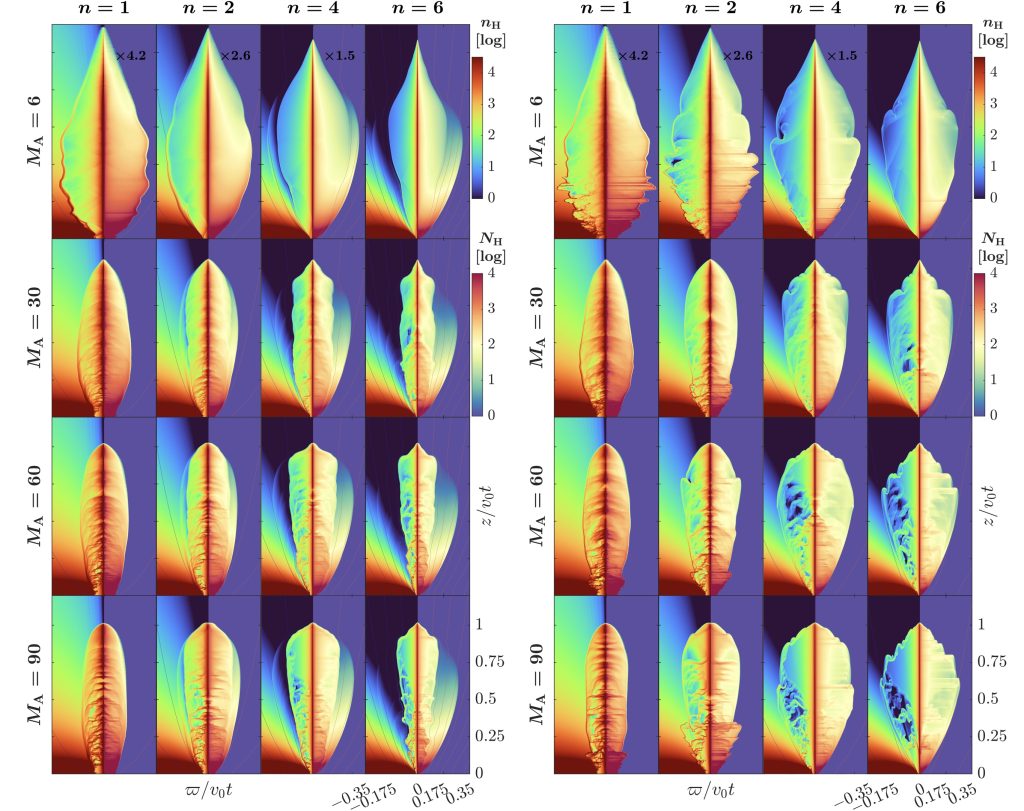
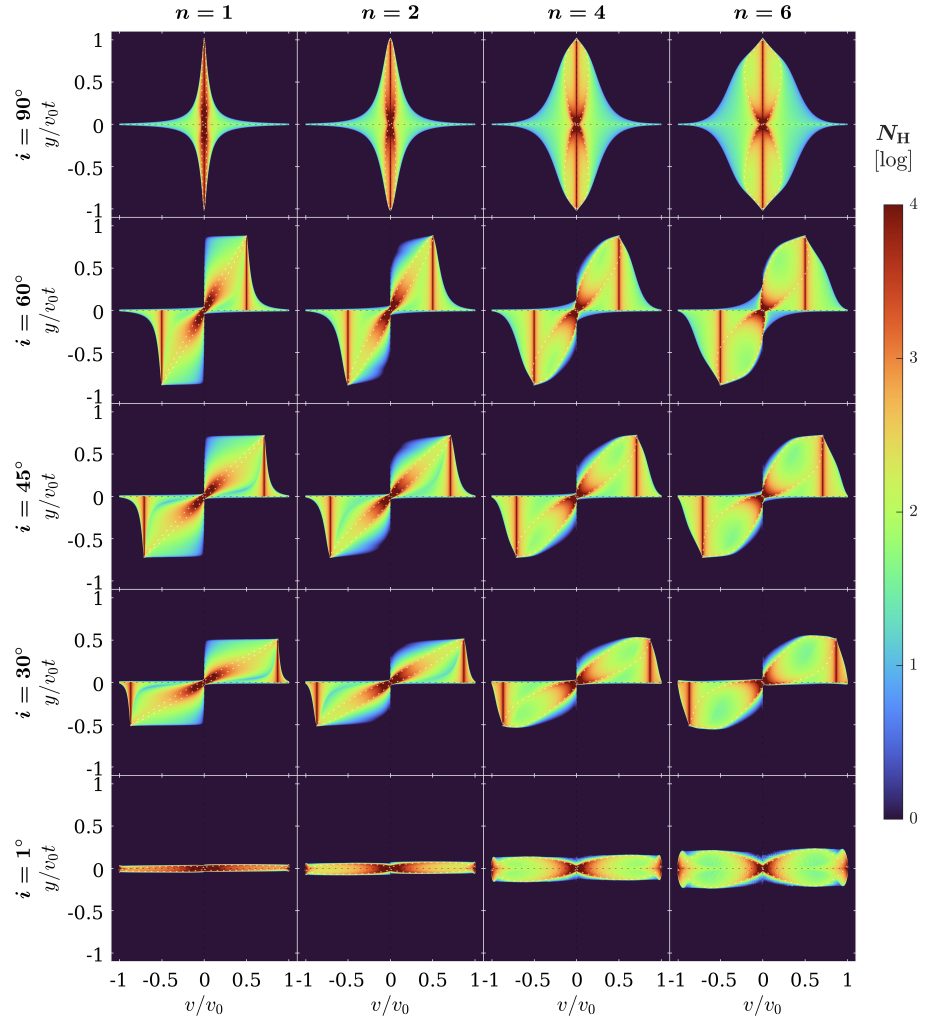
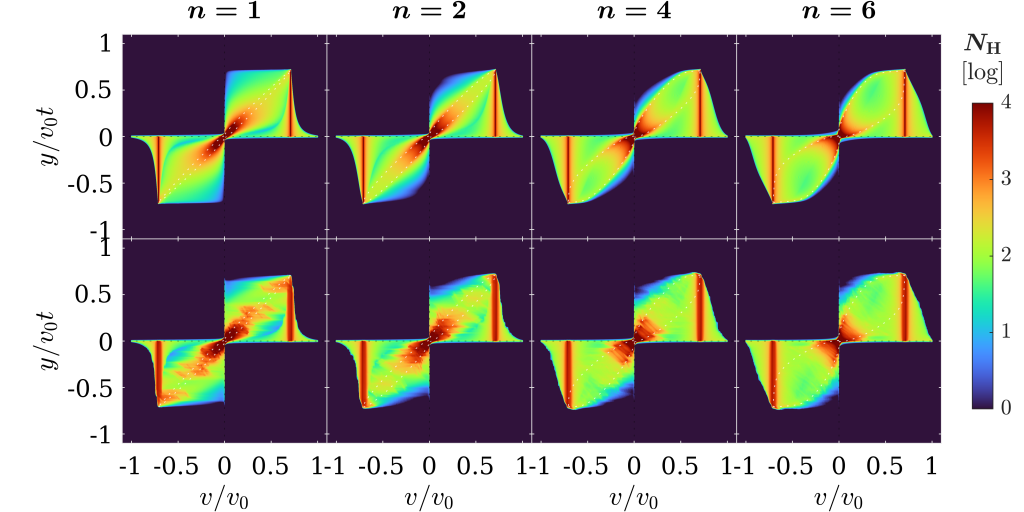
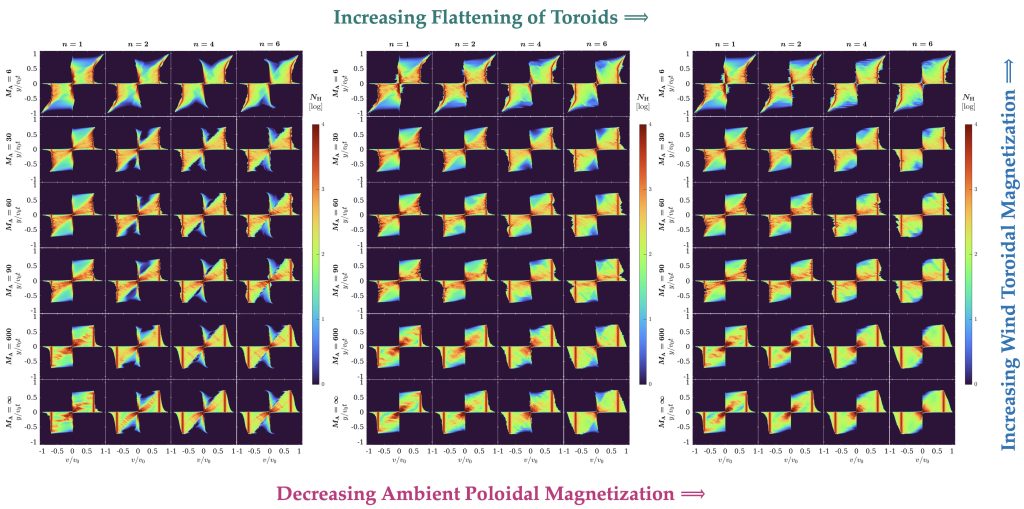

Related Publications
- Shang H; Liu C-F; Krasnopolsky R; Wang L-Y, “A Unified Model for Bipolar Outflows from Young Stars: Kinematic Signatures of Jets, Winds, and Their Magnetic Interplay with the Ambient Toroids”, ApJ: 944(2), id.230 (55 pp), Feb, 2023 [SCI] ( ADS | Fulltext )
- Shang H; Krasnopolsky R; Liu C-F; Wang L-Y;, “A Unified Model for Bipolar Outflows from Young Stars: The Interplay of Magnetized Wide-Angle Winds and Isothermal Toroids”, ApJ: 905(2), 116, Dec 20, 2020 [SCI] ( ADS | Fulltext )
- Wang L-Y; Shang H; Krasnopolsky R; Chiang T-Y, “A Two-Temperature Model of Magnetized Protostellar Outflows”, ApJ: 815(1), 39, Dec 10, 2015 [SCI] ( ADS | Fulltext )
- Shang H; Allen A; Li Z-Y; Liu C-F; Chou M-Y; Anderson J, “A Unified Model for Bipolar Outflows from Young Stars”, ApJ: 649(2), 845-855, Oct 1, 2006 [SCI] ( ADS | Fulltext )

